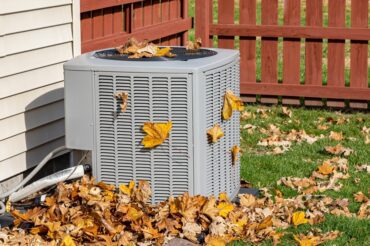You rely on your home’s furnace to keep you warm during the cold winter months. If your unit is acting up or operating inefficiently, you’ll probably need furnace replacement or repair services.
Before calling a professional HVAC company, however, there are some steps you can take on your own to try and tackle the issue.
Check the Thermostat
If your furnace is not operating at all, verify that your thermostat is on the correct heating or cooling setting.
If you’re experiencing extreme changes in room temperature, the thermostat most likely needs to be adjusted. The owner’s manual will have instructions on replacing thermostat batteries and steps to program your electronic thermostat. Due to variations in the design of thermostats, it is best to refer to your manual before removing the cover. You may also find some trouble shooting suggestions listed in the manual.
Check Air Flow
Some furnaces will cycle on and off frequently due to clogged filters. This wastes energy and causes excessive wear and tear on system components. Check the outdoor condenser unit as well. Vegetation should be at least 24 in. away to allow needed air flow and drainage. You can use a vacuum or leaf blower to remove dust and leaves.
Confirm the Furnace Is Getting Power
Start by looking for a power switch on the wall near your unit and inside the air handler cabinet. Most units do not have power switches, but some do. It is worth a quick check to be sure.
Check the main electrical panel and all sub-panels for tripped circuit breakers. Some breakers may appear on when not fully engaged. Turn the unit’s breakers off and then on again. There is always a reason for a breaker to trip. It does so to protect wiring and your HVAC system. You should not continue to reset tripped breakers without knowing why it is tripping.
Do not remove access panels or begin disconnecting power supplies unless you are properly trained. Gas furnace repair requires extra precautions.
Odd Noises
A high-pitched whine usually indicates a worn out belt that needs to be replaced. If you notice a loud roar with your gas furnace, it’s most likely a dirty gas burner or improper setting on the pilot light. The outdoor condenser unit has to be level to avoid problems. It is possible that the small concrete pad has settled and needs to be adjusted. A unit that’s not properly leveled will require furnace repair that could have been avoided.
When you do need to call a professional HVAC technician, contact Top Notch Heating, Cooling & Plumbing. We’ve been proudly serving Kansas City Metro and Johnson County, KS since 1974. Your satisfaction is guaranteed. We’re not comfortable until you are.






